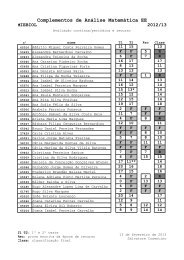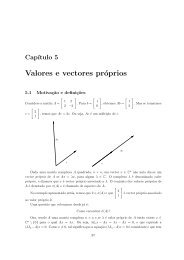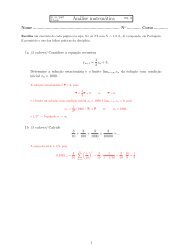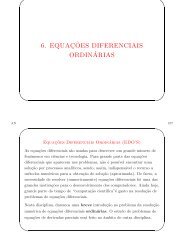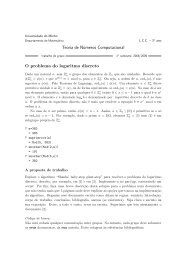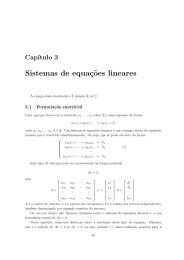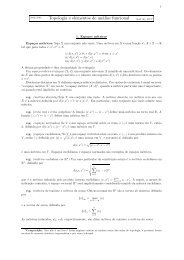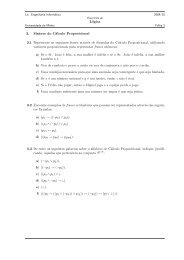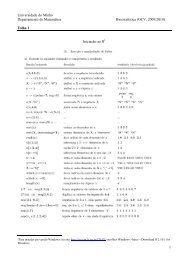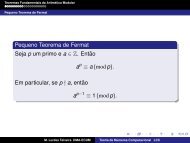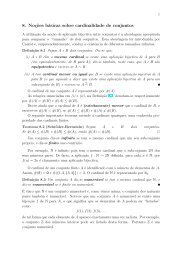My title - Departamento de Matemática da Universidade do Minho
My title - Departamento de Matemática da Universidade do Minho
My title - Departamento de Matemática da Universidade do Minho
You also want an ePaper? Increase the reach of your titles
YUMPU automatically turns print PDFs into web optimized ePapers that Google loves.
6 FLOWS 45<br />
which un<strong>de</strong>rgoes a catastrophe (infinite population) in finite time!<br />
Um mo<strong>de</strong>lo mais realista <strong>da</strong> dinâmica <strong>de</strong> uma população num meio ambiente limita<strong>do</strong> é a<br />
equação logística 12<br />
Ṅ = λN(1 − N/M)<br />
on<strong>de</strong> λ > 0 e a constante M > 0 é a população máxima suporta<strong>da</strong> pelo meio ambiente. Observe<br />
que Ṅ ≃ λN se N ≪ M, e que Ṅ → 0 quan<strong>do</strong> N → M. A população relativa x(t) = N(t)/M<br />
satisfaz a equação logística “adimensional”<br />
ẋ = λx(1 − x) .<br />
Here we see two equilibria: the trivial equilibrium x(t) = 0 and the maximum allowed polpulation<br />
x(t) = 1. The generic solution with initial condition 0 < x(0) < 1 is<br />
1<br />
x(t) = ( ) ,<br />
1<br />
1 +<br />
x 0<br />
− 1 e −λt<br />
Exponential growth, super-exponential growth and logistic mo<strong>de</strong>l.<br />
6.4 Linear systems<br />
Linear systems and exponential.<br />
Consi<strong>de</strong>r a linear system<br />
ẋ = Ax<br />
for t ↦→ x(t) ∈ R n and A ∈ Mat n (R). The solution is given formally by<br />
x(t) = e tA x(0)<br />
where the “exponential operator” e tA is <strong>de</strong>fined by the power series<br />
e tA =<br />
∞∑<br />
n=0<br />
t n<br />
n! An<br />
Hyperbolic systems. O campo linear v(x) = Ax é dito hiperbólico se o espectro <strong>de</strong> A, o<br />
conjunto<br />
sp(A) = {λ k = ρ k + iω k ∈ C t.q. <strong>de</strong>t(A − λ k I) = 0}<br />
<strong>do</strong>s valores próprios <strong>de</strong> A, é disjunto <strong>do</strong> eixo imaginário (ou seja, ρ k ≠ 0 ∀k).<br />
• Verifique que<br />
A =<br />
( )<br />
ρ1 0<br />
0 ρ 2<br />
⇒ e tA =<br />
( )<br />
e<br />
ρ 1t<br />
0<br />
0 e ρ2t<br />
A origem é dita no<strong>do</strong> estável se ρ 1 , ρ 2 < 0, no<strong>do</strong> instável se ρ 1 , ρ 2 > 0, ponto <strong>de</strong> sela se<br />
ρ 1 < 0 < ρ 2 .<br />
12 Pierre François Verhulst, Notice sur la loi que la population pursuit <strong>da</strong>ns son accroissement, Correspon<strong>da</strong>nce<br />
mathématique et physique 10 (1838), 113-121.



